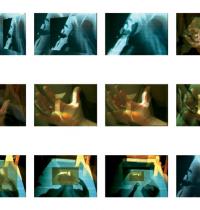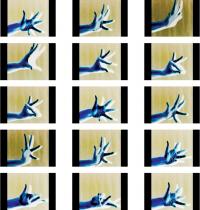Anusha Lall
Grant Period: Over six months
Anusha Lall is an independent dancer and choreographer. She also teaches dance and makes dance video installations. She has trained in Bharatanatyam under Leela Samson and in western contemporary dance at the London Contemporary Dance School. She is a founding member of Gati, a dancers’ forum that shares knowledge on dance performance, research and practice in India, and a working group member of the Khoj International Artists’ Association. Giti Thadani, her collaborator, is a light architect who has made a number of visual presentations in different countries. She is also a photographer, writer and translator. She is currently working on a series of silent video films/stills titled ‘Light Compositions/Musical Scales’.
Anusha Lall sees Bharatanatyam and contemporary dance as complementary forms. She believes her training in contemporary dance has enabled her to ‘re-understand’ Bharatanatyam, thereby reinventing its structure and vocabulary. This grant supports her to work with Giti Thadani to develop Chhaap. The performance will explore and experiment with the movement principles of Bharatanatyam, giving new expression to its spatial and architectural dimensions through light and image installations. Chhaap is formulated as a work in three or four parts. Each part will be between 7 and 20 minutes long, with the entire work not exceeding an hour. It will be set in the familiar grid of pieces that comprise the Bharatanatyam repertoire as it is performed today. These are the Alarippu, the Varnam and/or Jatiswaram and the Tillana. The first piece will explore some of the formal and structural themes of the Alarippu in which the opening position of the body forms the stark image of a cross. The verticality of the body is set off by the horizontal extension of the arms. This position is fundamental to Bharatanatyam and prepares the ground for the exploration of these two trajectories. Among the questions that Anusha will explore are: Can the horizontal position of the Natyarambhe be constantly in the making? Is it possible to refer to the vertical line of the body in its absence? If the body is tilted, how does this influence the dancer’s relationship with the floor and the position of the arms? Can the absence of the vertical play with the audience’s expectation of it produce a new aesthetic?
The series of video images against which this section will be performed will play with the notions of the vertical and the diagonal. These trajectories of light on either side of the dancer will form a calibrated and moving ‘torana’ (entrance/gateway) within which the movement occurs. At times the movement in the light architecture will be choreographed to simulate and extend the lines created by the dancer, and at times to oppose and thereby reinforce them. The interaction between the dance lines and the light architecture is viewed as a layered dialogue between movement, stillness, dance solos, and light architecture solos.
Anusha and Giti plan to complete their research on dance and light architecture by early September and the choreography, editing and music composition by December 2007. The final stint of rehearsals is expected to begin in early January 2008 and the performance is scheduled to open at the end of the month.




